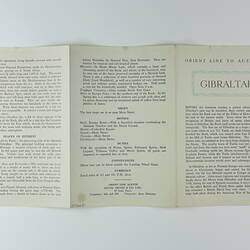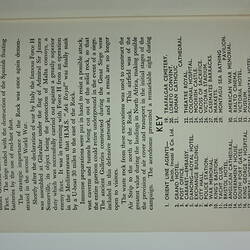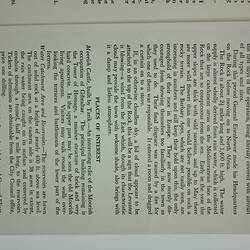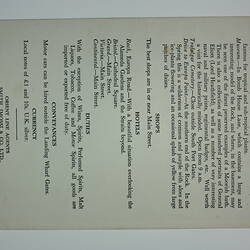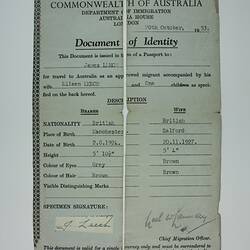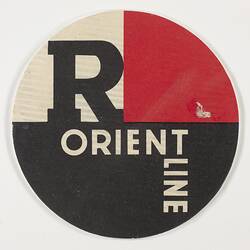Summary
Port of call booklet about Gibraltar, given to the Leech family during their return voyage from Australia to England on the Orient Line 'Orion' in 1955-56. It provides information about places of interest, history and other information, including a fold-out map of the city.
James and Eileen Leech and their daughter Susan migrated from Manchester, England under the ten pound assisted passage scheme in 1953. While James was keen to move to Australia, Eileen had a close knit family and was not keen to come. They sailed on board the 'New Australia', staying first in Sandringham with their sponsor and later moved to a rental house in Frankston. James, an optical mechanic, was employed by Coles and Garrard in the city. While James loved the lifestyle in Australia, Eileen's homesickness only worsened into depression, particularly after becoming pregnant, and the family returned to England on the 'Orion' in January 1956.
Physical Description
Fold-out booklet folded in 2 places, cream with black printed text and colour fold-out map.
Significance
Statement of Historical Significance:
This collection of primarily shipboard documents provides a rare opportunity to represent the experiences of post World War II assisted British migrants who subsequently returned to Great Britain. Of more than one million people who migrated from Great Britain from the late 1940s through to the 1970s over one quarter of them returned home (and 25% of those returned again to Australia). These migrants, often referred to as 'ten pound Poms' were part of a systematic series of post-war immigration policies and procedures which favoured British immigration into Australia. The Leech family only stayed in Melbourne for three years, Eileen finding homesickness to much to bear, not an uncommon reason for people deciding to return home.
Assisted British migration was a constant theme of Australian immigration history until the early 1980s. Government assistance initiatives had an enormous impact on the composition and size of the Australian population, and can be viewed within the broader context of building a white British nation, on the national agenda since Federation and the formalisation of the white Australia Policy through the Immigration Restriction Act of 1901. The relaxing of such policies after World War II in the desire to rapidly increase Australia's population which migration from the UK could not fulfil alone, saw Australia's immigration policies and its social, cultural and economic landscape change forever.
More Information
-
Collecting Areas
-
Acquisition Information
Donation from Susan Blunden, 17 Feb 2014
-
Issued To
-
Issued To
-
Organisation Named
-
Inscriptions
Front cover: 'ORIENT LINE TO AUSTRALIA/GIBRALTAR'
-
Classification
-
Category
-
Discipline
-
Type of item
-
Overall Dimensions - Closed
125 mm (Width), 185 mm (Height)
-
Keywords
English Immigration, Identifications, Shipboard Travel, Shipping Lines, Souvenirs

